Content Curation: Is It (Still) A Worthwhile Strategy?
There is no doubt about it:
The demand for new, exciting, and relevant content is continuously growing.
Brands need to up the amount of content they’re sharing to keep their audience’s attention.
But, this demand begs an important question:
Does the content you share need to be created by you?
Content curation is a powerful tool that can grow and engage your audience while saving time and money on content creation.
In this article, we want to show you why this is still a worthwhile strategy, and how you can use content curation to your advantage.

Manage all your social media accounts in one place.
Craft, schedule, & auto-post content to all your social channels, then track analytics and manage interactions from a single, easy-to-use dashboard.
Is Content Curation Still A Worthwhile Strategy?
The short answer?
Yes.
Content curation can help position your brand as an authority.
We live in an era of fake news and information overload. And, this has driven users to actively seek trusted outlets that “filter” the content they see, showing them only the good stuff.
Brands who share curated content on social media, for example, receive up to 33% more clicks than on their branded content.
50% of marketers also report that content curation has improved their:
- Brand visibility
- Perceived thought leadership
- Search engine rankings
- Web traffic
- Buyer engagement
And a further 41% say it has increased the quality of their sales-ready leads.
The truth is…
When Nerdist retweets content from industry publications, or when WIRED rounds up the day’s news, their audience embrace the opportunity to see something new:
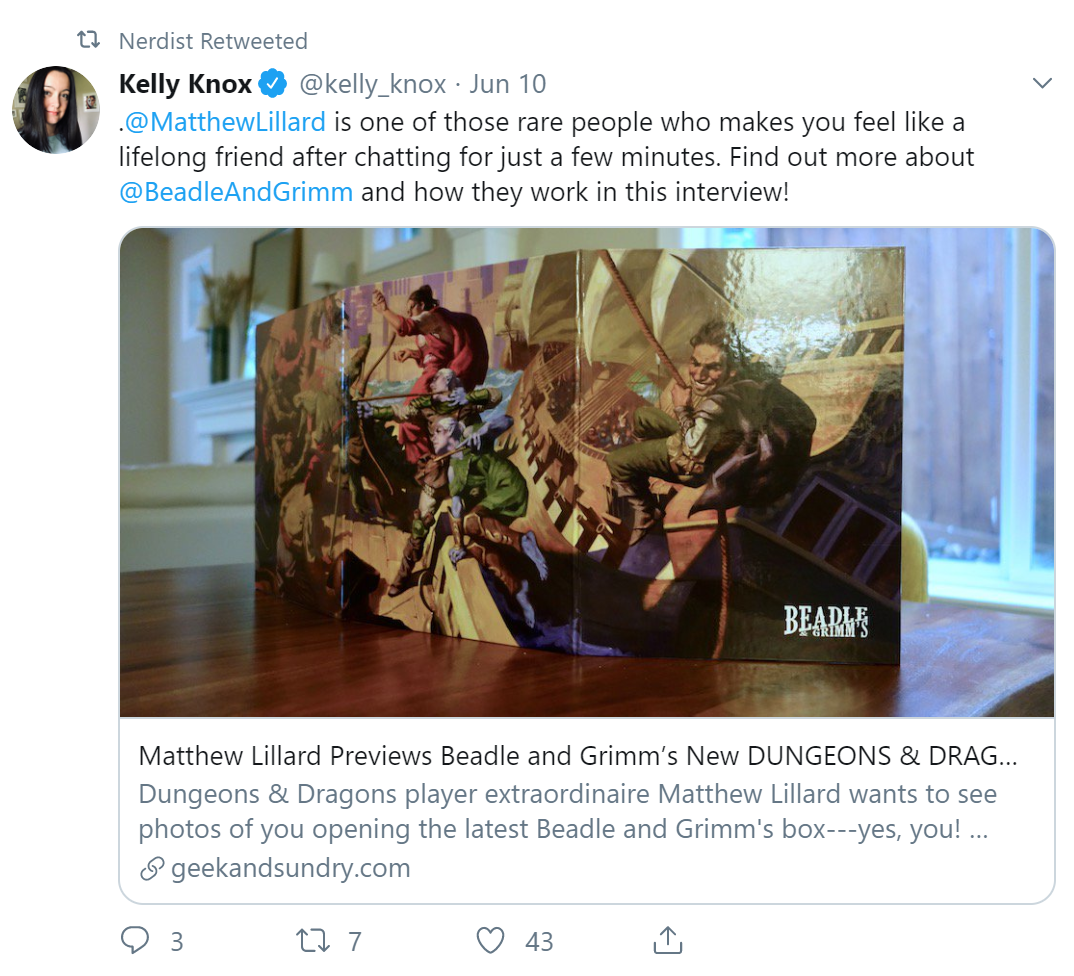
The benefits of content curation for brands are rooted in human psychology and how we decide who to trust.
As research curated for this article by the Harvard Business Review shows:
- We are more trusting when someone (or something) reflects ourselves
- We look to third-parties we trust to validate the character of new things
Because the brands you trust are an extension of who you are, you are also more likely to trust the information they share with you.
This plays a significant role in how brands like Social Media Today and TheNextWeb can build content around the content they curate each day.
But what does curated content look like, and is it as simple as just resharing what other people have created?
The Content Curation Landscape
Content curation has gone beyond just sharing third-party content.
It can now be used as a platform for you to add your own thoughts, ideas, and opinions to deliver a unique message to your audience.
Wisecrack is a media company that does this well.
They use content curation to educate their audience on philosophy, storytelling, and the deeper meaning behind the media we consume.
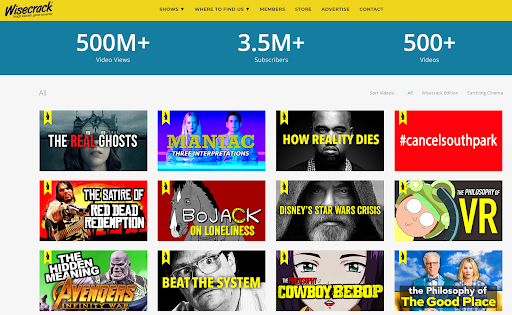
Their content typically selects a piece of TV or film media and provides commentary and insights into the inner-workings of the piece.
For example:
In this video, they explain the underlying philosophy of popular TV show “The Good Place”:
Curating content in this way has allowed Wisecrack to grow to over 3.5 million subscribers to their media channels.
This is an extreme example of how content curation has evolved and how it can be used to create a unique message. But, brands can also use this on a smaller scale.
Variations on this can be as simple as:
- Retweeting a post and adding your own insight
- Responding to a relevant industry piece on your blog
- Sharing a third-party article with your own opinions attached
- Curating news stories and providing key takeaways
The more value and context you can add to the content you curate, the more it will resonate and create a discussion with your users.
What you may also find surprising is that tangential content that only partially links with your primary industry can also be used to great effect.
Sharing content that is outside the “mainstream” of your industry will help to set you apart and show your brand really has a finger on the pulse.
For example, let’s look at a hypothetical personal finance brand.
They would not get much mileage out of curating content around everyday topics like:
- Not buying coffee
- Creating a budget
- Eating out less
But they may get excellent results from curating tangential content about:
- Innovative businesses who support their employee’s personal finances
- Opportunities to make more money through side hustling
- Success stories of people who have changed their relationship to money
Do not be afraid to experiment and look for obscure content to share that you find fascinating.
But how do you find all of this content to curate in the first place?
Well, there are several tools out there that can help you.
8 Tools That Make Content Curation Easy
One of the challenges brands face is finding high-quality content consistently.
When you act as a “filter” for your audience it means you have to invest time weeding out the weak content.
Thankfully there are a large number of free tools out there that can make curating content much more relaxed and systematic.
Here they are:
1. Pocket
Pocket is an easy to use tool for finding and storing content.
Their free version gives you an easy-to-navigate dashboard where you can view trending topics and instantly save them to your “pocket” to read later.
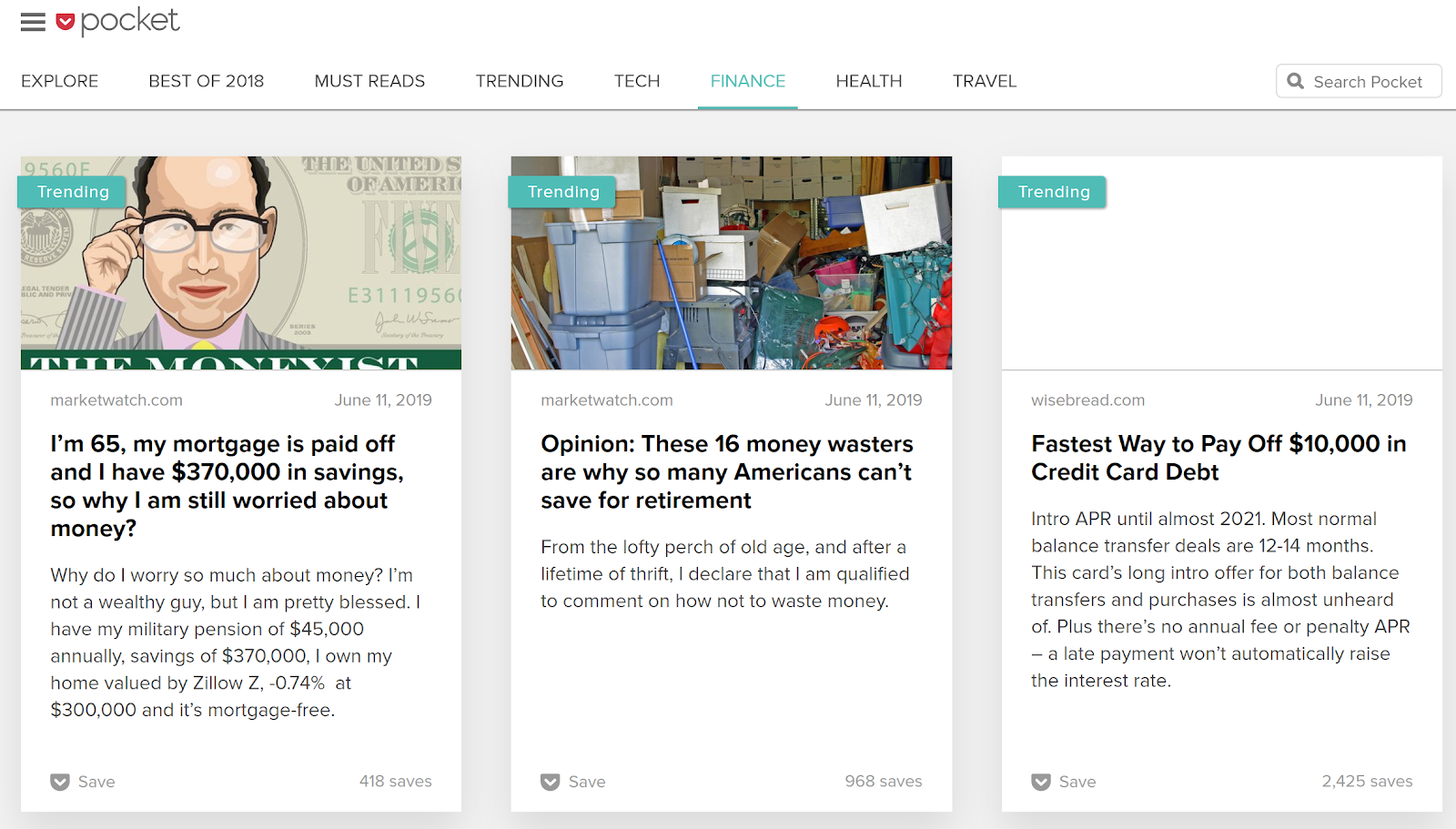
You can also search for specific topics and catch the latest news:
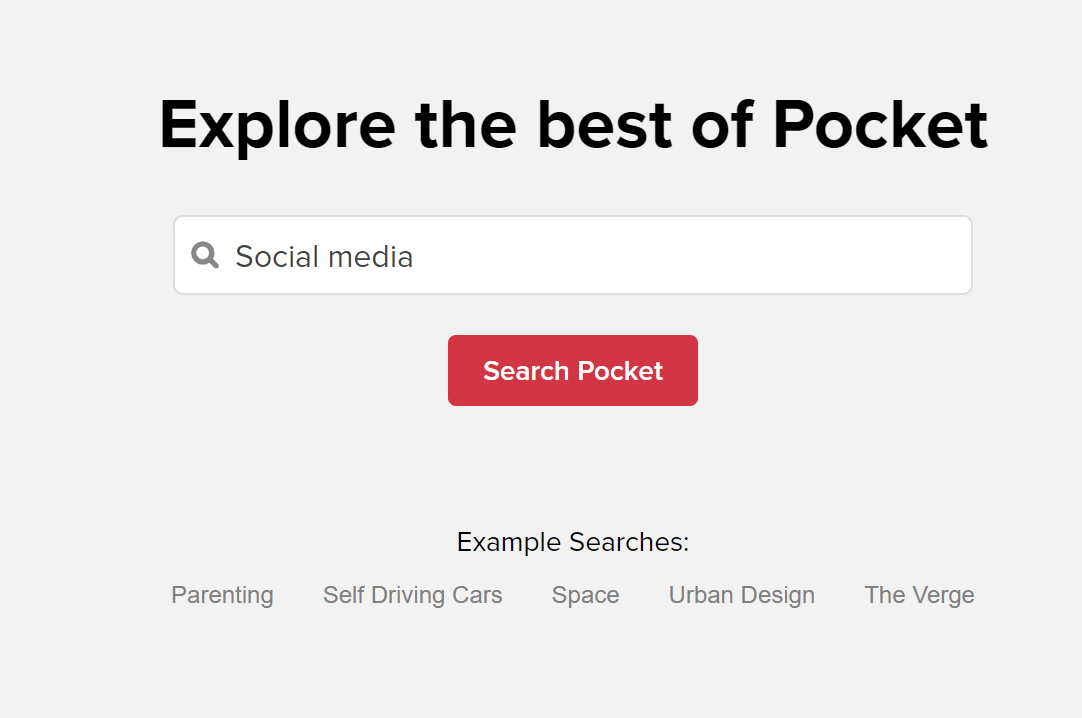
Or save items directly to pocket from your browser, social media feeds, or other connected apps. Better still, you can view these articles offline on any of your devices.
Pocket works really well as a defacto storage place for articles you want to read. You can build up a bank of content to look at when you get a chance. Then, choose the best posts to share.
2. PublishThis
PublishThis allows you to get really granular with content curation.
You can create and set alerts for content on specific channels, with exact keywords, and filter out low-quality content with a couple of clicks.
Take a look:
One of the most useful features is the ability to repurpose and share the content directly to your mailing list.
3. Twitter Lists
Twitter Lists allow you to create a news feed around topics you care about.
You can add brands, publications, and influencers to create a laser-focused content list:
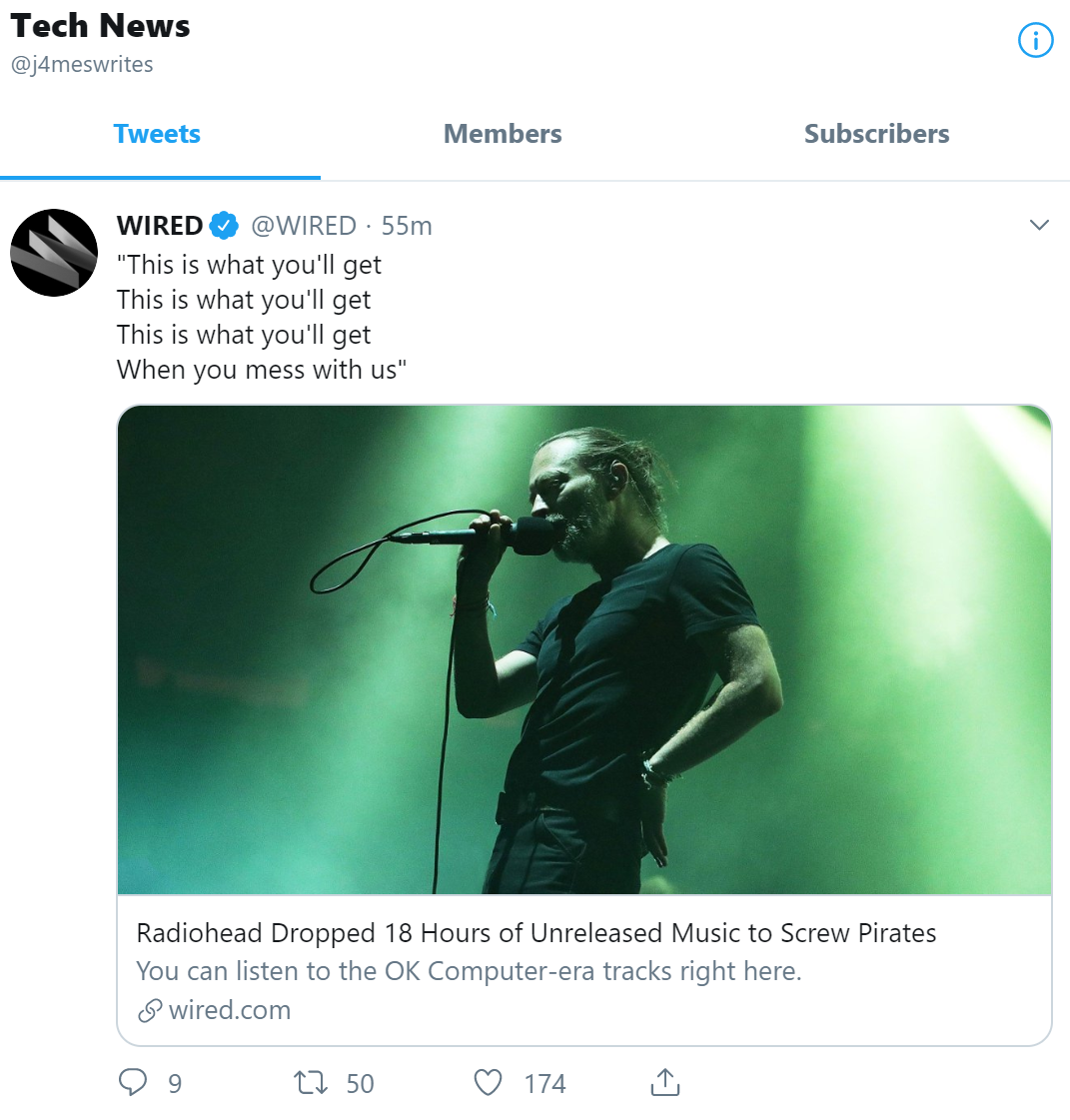
They can be set up for free and allow you to dive in and out of topics at your own leisure.
Simply go to:
Twitter > Account Info > My Lists > Create New List
And you can start adding people to a private or public list right away:
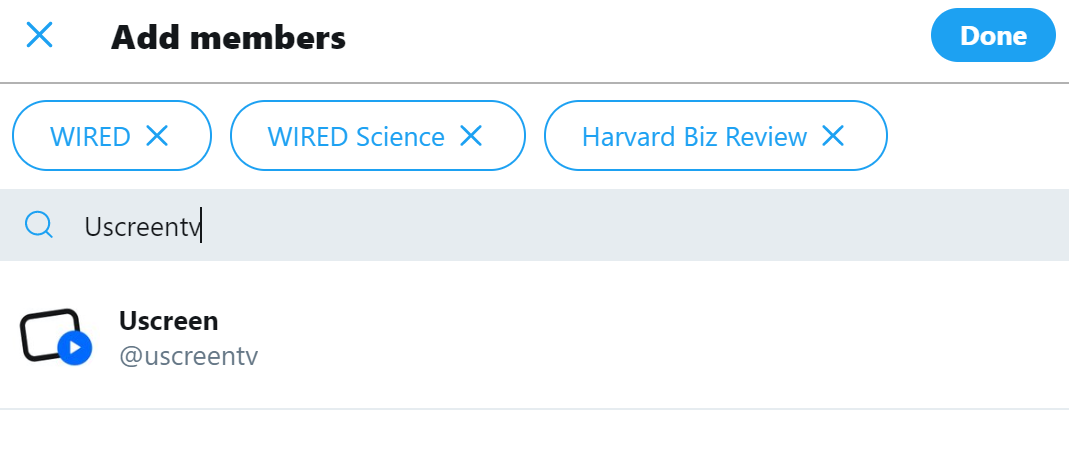
This is a great little trick to filter out unnecessary noise from your feed and stay connected with topics that matter to you and your audience.
4. Facebook Groups
Facebook Groups can be a great way to find “underground” content in niche communities.
The key to finding a high-quality Facebook Group is to:
- Look for groups that focus on a targeted niche
- That get several posts each day
- With strict guidelines on posting and sharing “marketing” content
You will often find this information on the “Join Group” page or in the sidebar:
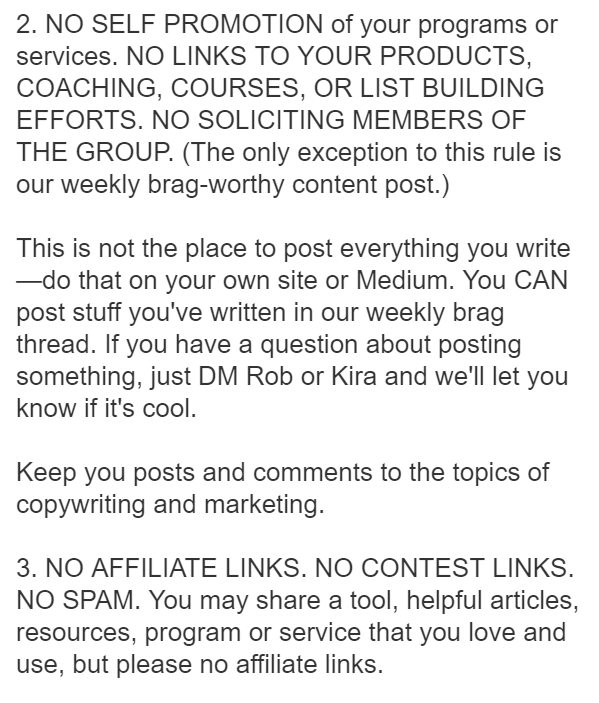
Using these guidelines will help to ensure that you are in a group full of people who are active in a niche, and not full of people looking to promote their own content.
5. Newsletters
Newsletters are an endless source of content curation inspiration. And, they are especially good for finding that tangential content we mentioned earlier.
For example:
Ugmonk’s CEO sends out a monthly newsletter called “5 things I’m digging” which contains lots of content about design, helpful products, interesting initiatives, and fun content:
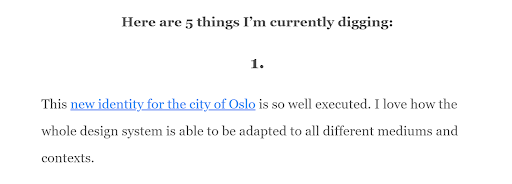
Occasionally, you may receive an email where your brand intersects with the sender’s and you can use the content on your own feeds.
Try to think of industries that have a crossover with your brand’s and join some of the popular mailing lists. They might just contain some great content for you to curate!
6. Google Alerts
Google Alerts allows you to set up notifications when relevant content gets posted.
All you need to do is choose your keywords and enter them into the tool:
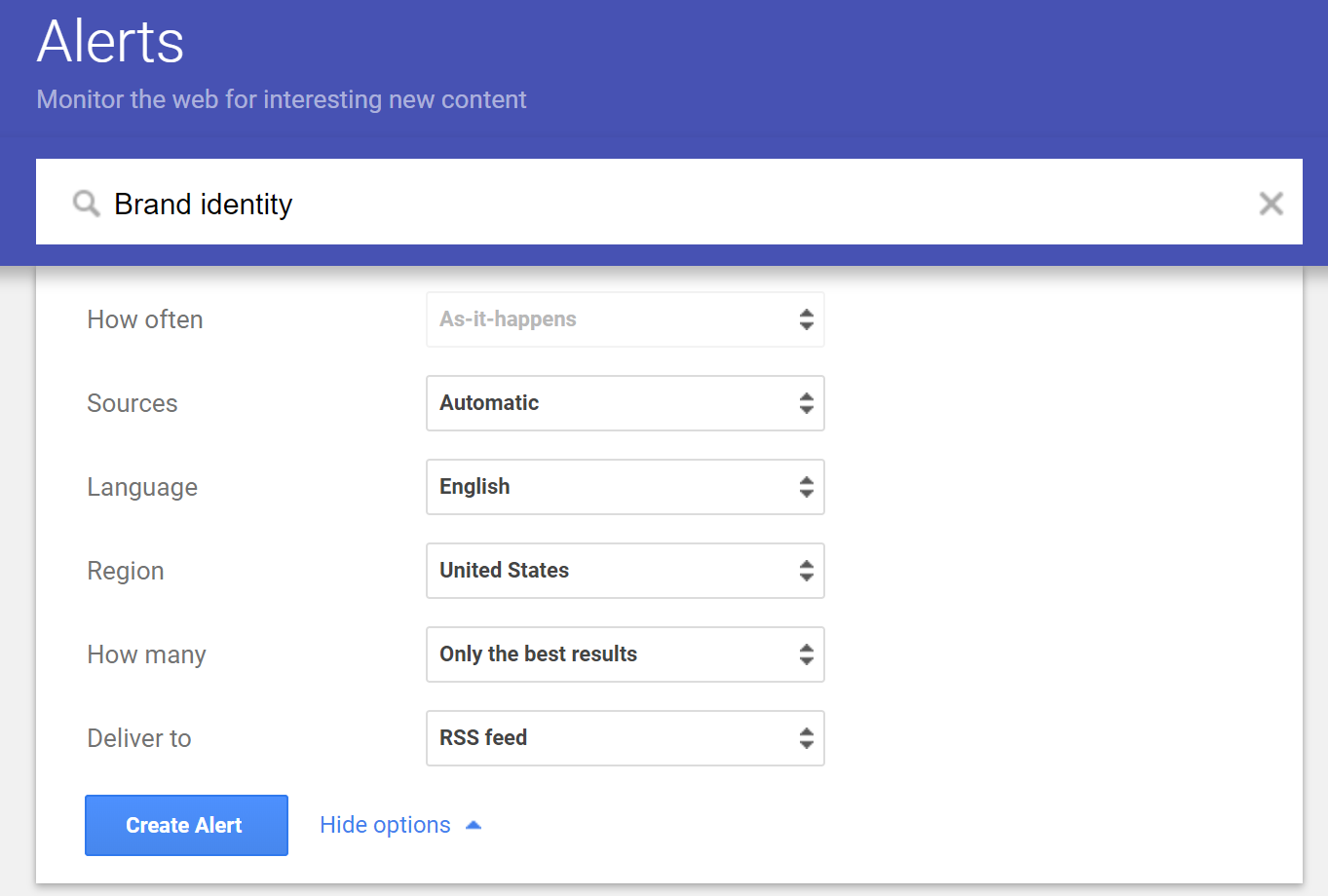
You will then receive a roundup of content about that topic in your RSS feed or delivered directly to your inbox at the interval of your choosing.
7. Reddit
Reddit is an endless resource for curated content.
Subreddits are continuously updated by passionate people who love the topics they are discussing. And, they share content en masse.

Choose a relevant (or tangential) forum and select the “new” or “rising” filter and you will see new content that is gathering attention in these communities.
The upvote system can also give you an indication as to whether people in your audience will care about this topic.
8. Quora
Quora has some brilliant people sharing content on their platform.
From CEOs to scientists and students to economists, there are people taking time out of their day to ask and answer questions. These Q&A sessions alone can be great for curating from.
Quora becomes a real content curation engine when you take a look inside their “Spaces” feature.
These are forums where people share questions, answers, and third-party content other people might like:
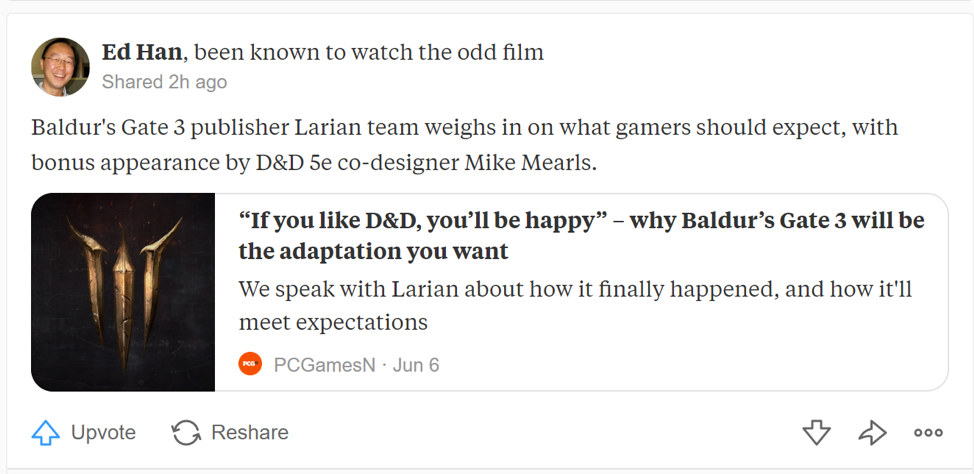
There are some really great shares in the spaces, so be sure to pay attention to them.
Note: this list is not meant to be exhaustive, given all the amazing content curation tools available out there. For instance, Feedly is a fantastic RSS reader that lets you curate content from sites you love, and Sniply allows you to capitalize on content you share with a header that redirects to your site.
Content Curation In A Nutshell
Content curation — when done correctly — presents lots of benefits for your brand.
Not only does it position you as an authority, but it can save time and money on content creation while increasing the number of potential leads you generate.
Content curation is no longer as simple as just posting third-party content on a feed. Your customers are looking for insight and context and your thoughts on the matter.
Thankfully, curating content is free and can be made much easier by using simple tools, many of which you already know and use every day.



